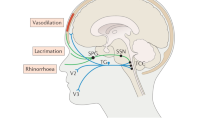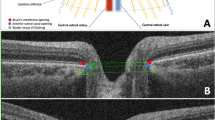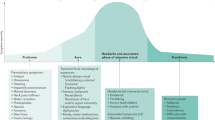Abstract
Data sources Medline, Cochrane Database of Clinical Trials and bibliographies of identified articles.
Study selection Only English-language papers that clearly stated the defined diagnostic criteria were included. For the management section, controlled trials were used if available.
Data abstraction and synthesis A qualitative synthesis of included studies was carried out.
Findings Cluster headache is rare (lifetime prevalence of 0.07%). Smoking appears to increase the risk but there is conflicting evidence about the role of coffee and alcohol. Diagnosis is entirely based on clinical features. No laboratory or radiological investigations with sufficient sensitivity and specificity have been identified. The pain is described as very severe and can last for up to 3 h. There is often parasympathetic overactivity such as lacrimation and rhinorrhea. In some patients there is facial flushing or pallor, dysaesthesia of scalp hairs, tenderness of the carotid artery on that side and bradycardia. Sympathetic activity can result in miosis or ptosis on that side of the face. The main differential diagnosis is migraine.
Attacks are typically at night (when sleep apnoea can occur) and can be caused by alcohol, notroglycerine and histamine, leading to the hypothesis that oxygen desaturation triggers an attack. Standard treatment of acute attacks is oxygen delivered by facemask but this has only been evaluated in one small double-blind randomised controlled trial (RCT). A review of sumatriptan has shown it to be effective without serous adverse effects or cardiovascular changes. Dihydroergotamine (DHE) and ergotamine have both been reported to be useful but only the nasal for of DHE has been evaluated. Intranasal capsaicin was used successfully in two RCT. There have been few RCT that considered prophylaxis, and surgical-management studies did not include controls and were of varying quality. A case-series of 66 patients did find blockade of the sphenopalatine ganglion and radiofrequency thermocoagulation of the Gasserian ganglion was produced good results in a case series of 27 patients.
Conclusions An overview of this condition is presented based on a thorough review of the area with treatment guidelines suggested based on findings.
Similar content being viewed by others
Log in or create a free account to read this content
Gain free access to this article, as well as selected content from this journal and more on nature.com
or
References
Olesen J . Differentiating migraines from other headaches. In: Pain 2002—An Updated Review. Edited by Giamberardino MA. Seattle: IASP Press. 2002: 61–68.
Granella R, D'Alessandro R, Manzoni GC, et al. International Headache Society classification: interobserver reliability in the diagnosis of primary headaches. Cephalalgia 1994; 14:16–20.
Solomon S, Lipton RB . A headache clinic-based approach to field trials of the International Headache Society criteria. Cephalalgia 1993; 13(suppl. 12):S63–S65.
Author information
Authors and Affiliations
Additional information
Address for correspondence: Dr Joanna M Zakrzewska, Oral Medicine, St Bartholomews and the Royal London Hospitals, Queen Mary's School of Medicine and Dentistry, Turner Street, London E1 2AD, UK. E-mail: J.M.Zakrzewska@qmul.ac.uk
Zakrzewska JM Cluster headache: a review of the literature. Br J Oral Maxillofacial Surg 2001; 39:103–113
Rights and permissions
About this article
Cite this article
Ohrbach, R. Cluster headaches—evidence-based guidance. Evid Based Dent 4, 10 (2003). https://doi.org/10.1038/sj.ebd.6400151
Published:
Issue date:
DOI: https://doi.org/10.1038/sj.ebd.6400151



